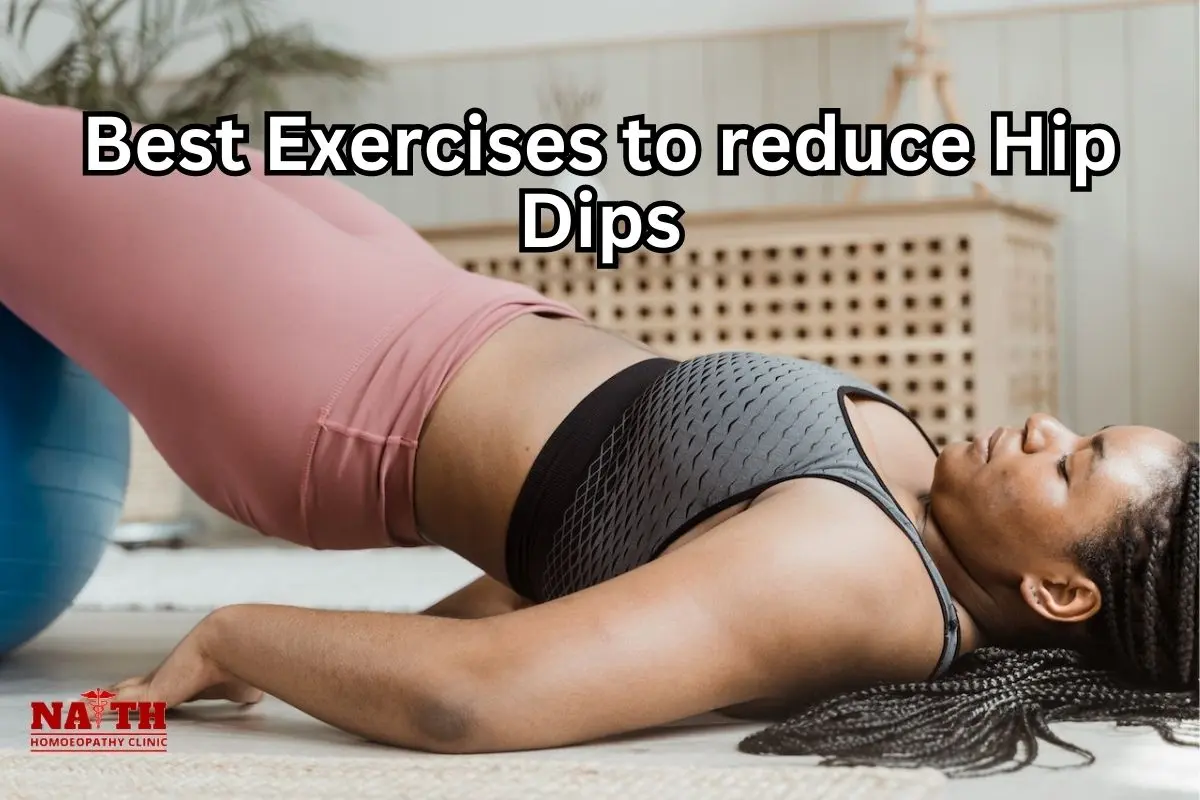Overview of Hip Dips
Hip dips, or the inward curve of your lower hips, are a common body shape that many people are self-conscious about. Fortunately, there are exercises to reduce hip dips and tone your lower body. These exercises target the muscles in the area to strengthen and tone them, improve posture and balance, increase flexibility and mobility, reduce fat in the hip area, and regulate hormones.
One of the best ways to reduce hip dips is through strength training exercises. Squats can help target your inner thighs and hip adductors while also integrating other muscle groups for improved balance and stability. Lunges are another great option that incorporate several muscle groups in the legs and core for powerful results. Chair pose is another exercise that focuses on engaging your adductors for improved stability as well as strengthening your core muscles for better posture and balance.
In addition to strength exercises, stretching can have an incredible effect on reducing hip dips. Stretching helps release tension in your hip area while improving range of motion at the same time. Work on dynamic stretches such as leg swings or lying side extensions to open up tight muscles around your hips while building mobility in those areas over time.
To sum it up, there are a variety of exercises you can do to reduce hip dips from strength training exercises like squats and lunges to stretches like leg swings or lying side extensions. Not only will these exercises help with toning up areas around your hips but they will also improve posture & balance, increase flexibility & mobility, boost fat loss in that area, as well as regulate hormones which could be helpful given certain hormonal imbalances linked with belly fat storage.
Benefits of Exercising to Reduce Hip Dips

Here are some exercises you can do to reduce hip dips:
Building Core Strength:
Core strength exercises are important for engaging your abdominal and hip muscles, which are essential for reducing the appearance of dips in the hips. Try planks, mountain climbers, and side planks to help build core strength!
Improving Posture:
Poor posture can make hip dips more noticeable. To improve posture and reduce hip dips, practice proper alignment when sitting and standing. This includes keeping your abs tight, chest up, back straight, shoulders relaxed and down away from your ears. Strengthening exercises such as bridges and reverse crunches can also help improve posture while toning the surrounding areas.
Increasing Mobility/Flexibility:
Increasing mobility will help you perform better in other exercises that target hip dip reduction. Doing stretches such as seated inner thigh stretches or lying straddles will increase flexibility in your hips so you can move them more freely while exercising.
Increasing Muscular Endurance:
Cardio exercises like running, swimming or cycling will not only burn calories but also increase muscular endurance in both the glutes and abdominals which helps reduce hip dip appearance over time when done regularly.
Reducing Body Fat:
Exercises that focus on burning calories will help reduce body fat all over but focusing on core work such as Pilates or yoga for example will target belly fat that may be causing a deeper dip in the hips.
Types of Exercises for Reducing Hip Dips

Here are some of the types of exercises to reduce hip dips:
One of the most important aspects when trying to reduce hip dips is developing strong core muscles. This can be done by doing planks, crunches, and bicycles. Strengthening your core not only helps with reducing hip dips, but also helps with posture and endurance for other forms of exercise.
Glute activation
Glute activation is another key part of reducing hip dips. This involves doing glute bridges, fire hydrants, side-lying clamshells, and kickbacks. These will help awaken those muscles that are usually sleeping and assist in improving hip dip appearance.
Cardio exercises
Cardio exercises such as jogging or walking outside not only raise your heart rate but also engage the lower body muscles that affect hip dip reduction over time. If you can’t make it outside, there are plenty of online classes available that offer an array of low impact options such as yoga or Pilates designed specifically with hip dip reduction in mind.
Stretching & flexibility
Stretching & flexibility is also an important factor to address when trying to relieve hip dips. Some great stretches for this purpose include seated hamstring stretches, pigeon poses, butterfly stretches, and side lunges. These will help reduce tension in the hips so they don’t protrude as much outwardly allowing them to become less noticeable over time.
Hip abductor/adductor exercises
Hip abductor/adductor exercises target the sides of your body where your hips meet the abdomen working these muscles helps build strength which can pull in the sides thus reducing excess fat or skin causing a dip appearance around the hips.
Common Mistakes to Avoid When Exercising for Hip Dip Reduction

Here are some of the common mistakes to avoid when exercising to reduce hip dips:
Body Shape during workout regimen
One mistake many people make is assuming that their body shape or type should determine their workout regimen. While it’s true that different body shapes may require different exercises to see results, everyone should adapt their program according to their own individual needs. So be sure to take into account your specific anatomy and fitness level before engaging in any exercises for hip dip reduction.
Not paying close attention to proper exercise form and technique
Another mistake is not paying close attention to proper exercise form and technique. Some exercises like squats and lunges are often done with incorrect posture leading to improper muscle activation and even possible injury. Taking the time to learn proper form from a certified trainer or fitness expert will help ensure you’re getting the most out of your workouts both safely and effectively.
Overstretching during warm ups or cool downs
Thirdly, avoid overstretching during warm ups or cool downs as well as in between sets in a workout session. Stretching too deeply can prevent muscles from activating correctly which can lead to poor performance during an exercise session. It’s important to remember that stretching should feel comfortable but not painful when done correctly.
Relying on machines or weights alone
Also, relying on machines or weights alone for hip dip reduction is a mistake many people make when first starting out. While machines/weights are effective tools in helping you reach your goals, don’t neglect bodyweight exercises such as planks, squats, glute bridges and side leg raises which are just as useful in reducing hip dips.
Book an appointment for treatment in Homeopathy, Contact Dr Kumar Gaurav for Best Homeopathy Treatment






